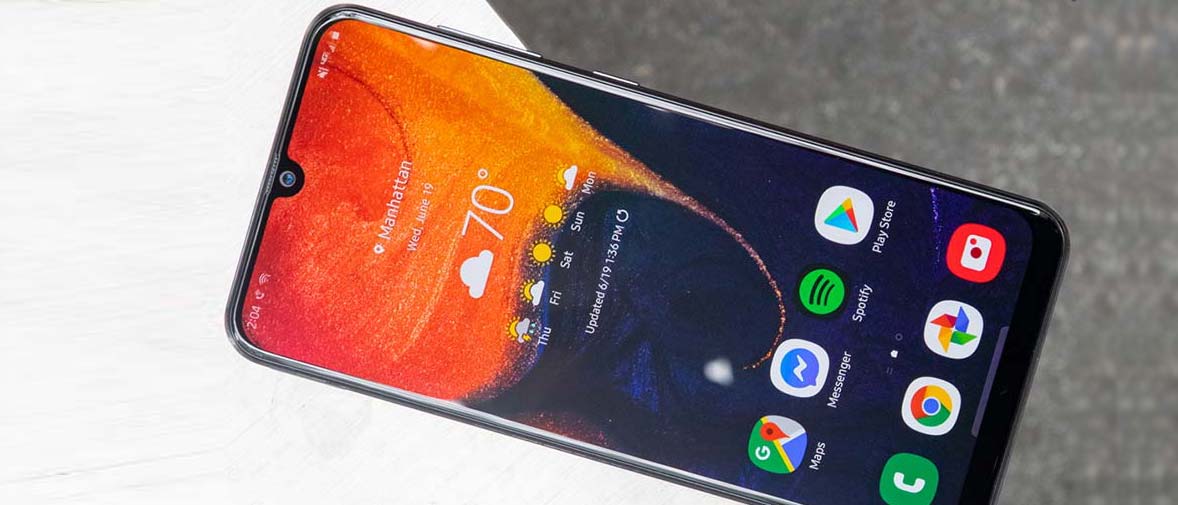Tom's Guide Verdict
The Galaxy A50's camera won't dazzle you, but it is still an excellent value with a class-leading display and solid performance.
Pros
- +
Best display for the price
- +
Design reminiscent of flagships
- +
Low price
- +
Solid performance
Cons
- -
Camera falls short of Pixel 3a
- -
Battery life is underwhelming
- -
Feels a little cheap
Why you can trust Tom's Guide
The Samsung Galaxy S50 is something you don't see often from the company: a very good cheap phone. In fact, the triple-camera, 6.4-inch, $349/£309 Galaxy A50 is one of the best Android phones for the money.
The Galaxy A50 is remarkably competitive for its price, with those headline features as well as strong performance from Samsung's in-house developed processor. And it actually looks pretty sharp for a bargain, too.
Once upon a time, we would have named it our go-to sub-$400 phone in a heartbeat. But today, Samsung has the unfortunate task of following up Google's Pixel 3a. How does the Galaxy A50 compare? Quite well.
Price and availability
After initially releasing on Verizon, Sprint and US Cellular, you can now buy an unlocked version of the Galaxy A50 for the same price of $349. One of the best unlocked phones, this A50 model works on all networks that allow customers to bring their own phones. Best Buy is offering the unlocked A50, and if you activate the device on Verizon, AT&T or Sprint when you purchase it from the retailer, you can save $50.
Those who would rather go through their carrier and opt for an installment plan can also save some cash, as Verizon is running a promotion in which you can get the device for $10 per month over 24 months, for a total of $240. U.S. Cellular charges $11.66 per month when you buy the Galaxy A50 on that carrier's 30-month installment plans. For deals all year round, be sure to check out our Verizon discount codes.
In the UK, you can get the Galaxy A50 SIM-free for around £309, with Samsung UK, Amazon UK and Carphone Warehouse all selling the phone at prices within pennies of each other.
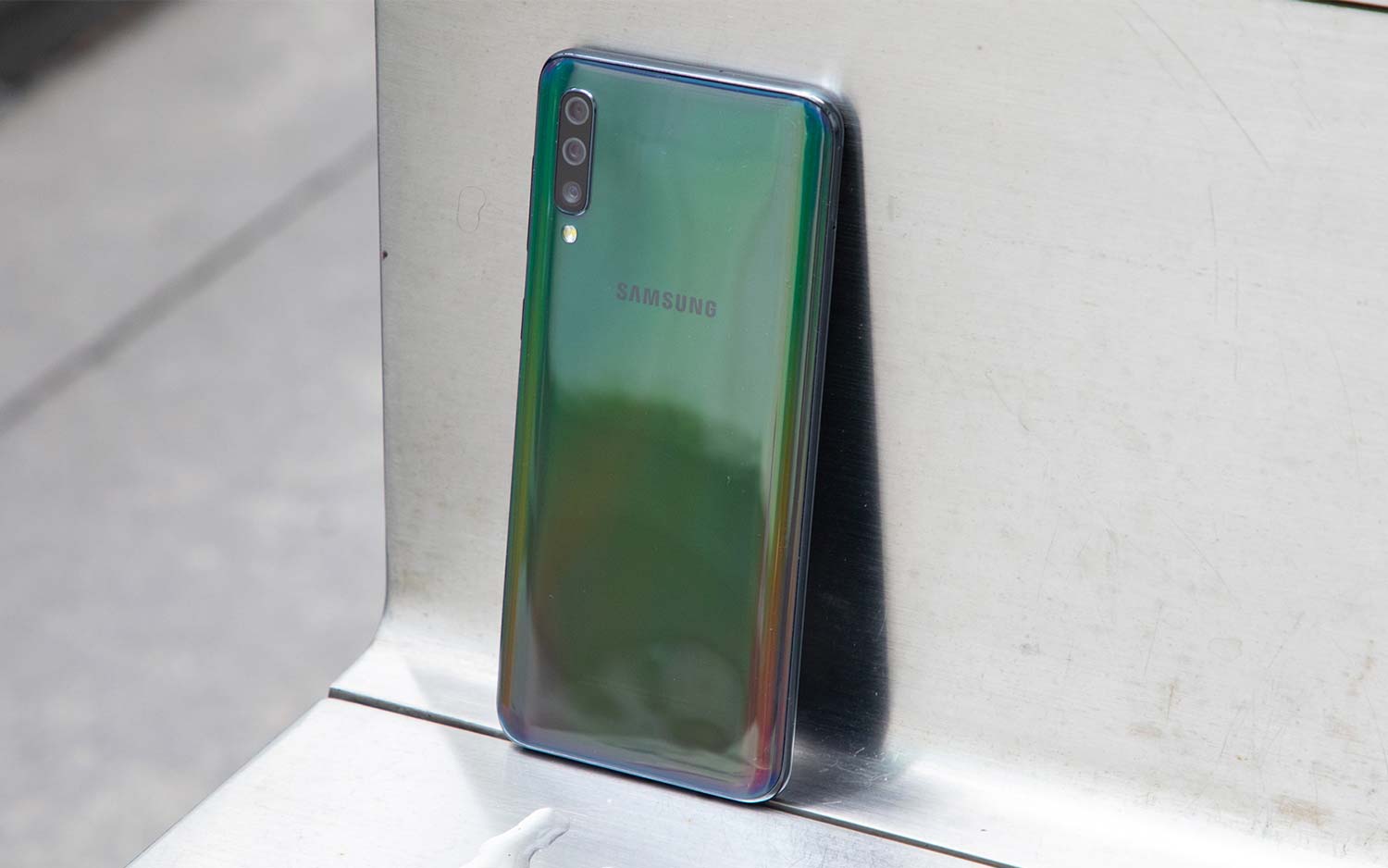
The A50 can be had only in black, with 64 GB of onboard storage and 4 GB of RAM. (Samsung sells alternate configurations of the phone in other markets, but this is all American buyers get.) However, there is a microSD slot that accepts cards up to 512 GB in size, allowing you to greatly expand that built-in space for apps, photos and music if you so choose.
Get instant access to breaking news, the hottest reviews, great deals and helpful tips.
With a 6.4-inch display, slim bezels and U-shaped notch lending priority placement to the front-facing camera, the Galaxy A50 could be mistaken for a flagship phone.
The A50 isn't the only cheap Galaxy to land this year. We've also received the $249/£169 Galaxy A20 and the $179/£139 Galaxy A10e, on a swath of carriers beyond Verizon and Sprint, including AT&T, T-Mobile, U.S. Cellular and Xfinity Mobile from Comcast.
Samsung Galaxy A50 Specs
| Price | $349/£309 |
| Display (Resolution) | 6.4-inch AMOLED (2340 x 1080) |
| Rear Camera(s) | Triple: 25-MP wide (ƒ/1.7); 8-MP ultrawide (ƒ/2.2); 5-MP depth sensor (ƒ/2.2) |
| Front Camera(s) | 25-MP (ƒ/2.0) |
| CPU | Samsung Exynos 9610 |
| RAM | 4 GB |
| Storage | 64 GB |
| microSD | Yes, up to 512 GB |
| Battery | 4,000 mAh |
| Colors | Black |
| Size | 6.24 x 2.94 x 0.30 inches |
| Weight | 5.86 ounces |
Design: A plastic Galaxy
With a 6.4-inch display, slim bezels and U-shaped notch lending priority placement to the front-facing camera, the Galaxy A50 could be mistaken for a flagship phone. It's only when you inspect this handset up close that little cost-cutting measures begin to reveal themselves.

I wouldn't say the A50 feels as cheap as its price might suggest, although clearly it can't compare with Samsung's S-series products in build quality. The iridescent, pseudo-gray back flashes in subtle waves of rainbows, but attracts more fingerprints than the Gorilla Glass-coated S10. In addition, the rippled, distorted reflections can't help but give away the phone's polycarbonate composition.
The Galaxy A50 is a hair thinner than the Galaxy S10 Plus and noticeably lighter as well, thanks to an all-plastic build replacing the S10 Plus' aluminum-and-glass makeup.
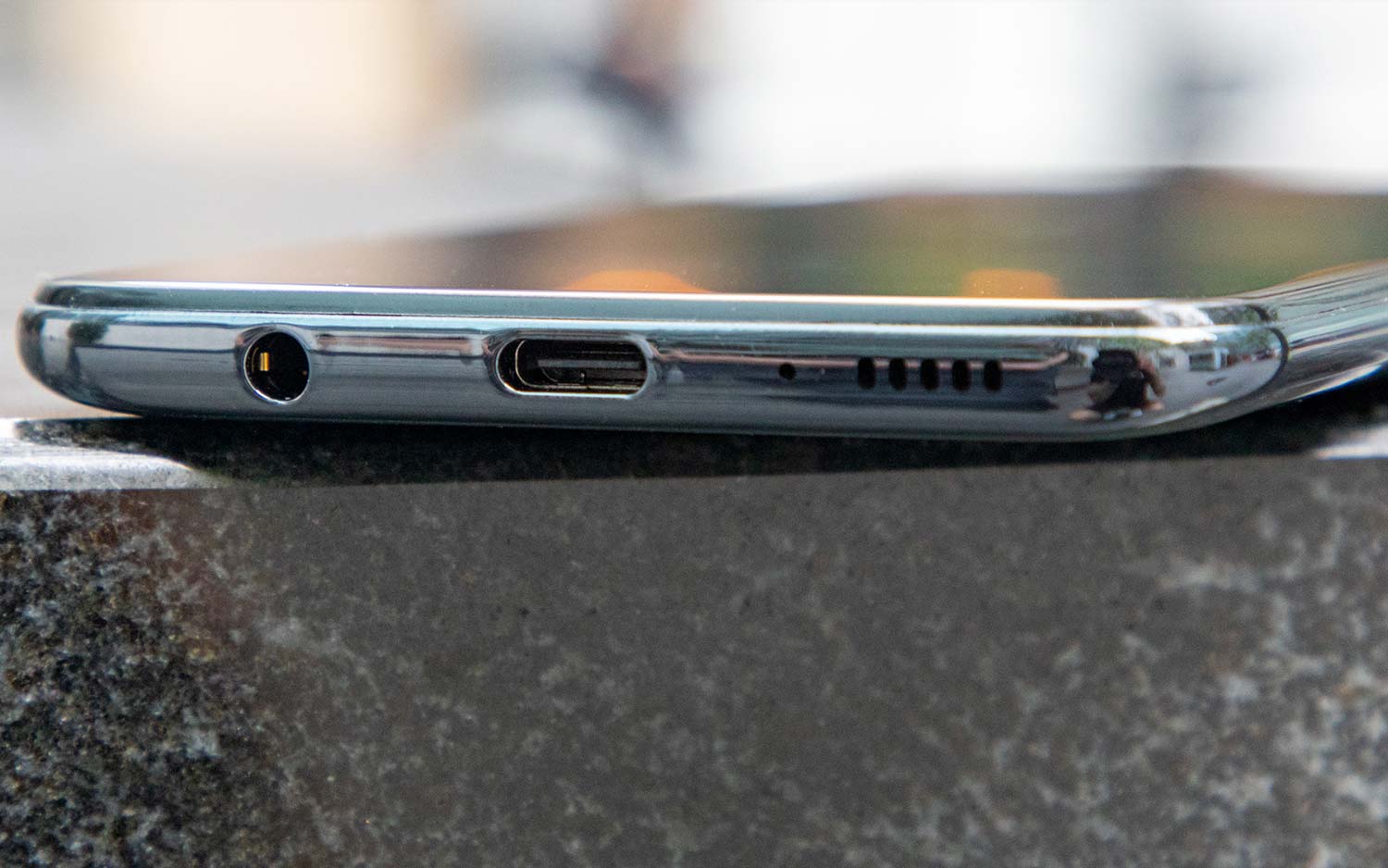
Still, Samsung's managed to shoehorn a gigantic 4,000-mAh battery in the A50's slender frame, as well as a 3.5-millimeter headphone jack on the bottom edge, next to the USB Type-C port. Perhaps even more impressive is the A50's in-screen fingerprint recognition — a feature that hasn't even made its way to some premium handsets yet.
It’s admirable enough that Samsung has delivered a 6.4-inch, Full-HD+ Super AMOLED panel in a $349/£309 phone. But what's truly impressive is precisely how good the A50's screen is.
The optical scanner in the midrange Galaxy technically isn't as secure as the ultrasonic system underpinning the S10, and you'll have to put up with a palpable delay that isn't present in traditional capacitive sensors. Still, it has proved reliable and easy-to-use in our testing — certainly a win for a device this inexpensive.
On the flip side, the A50's lack of IP-rated water resistance and stereo speakers are very much appropriate given the phone's low price. At least the lone bottom-firing speaker gets plenty loud.
Display: AMOLED at a great price
Lately, we've seen phones with OLED displays tumbling in price. The $499 Moto Z4 (not available in the UK) and the $399/£399 Pixel 3a are notable examples, though, with the Galaxy A50, Samsung has undercut both by considerable margins.
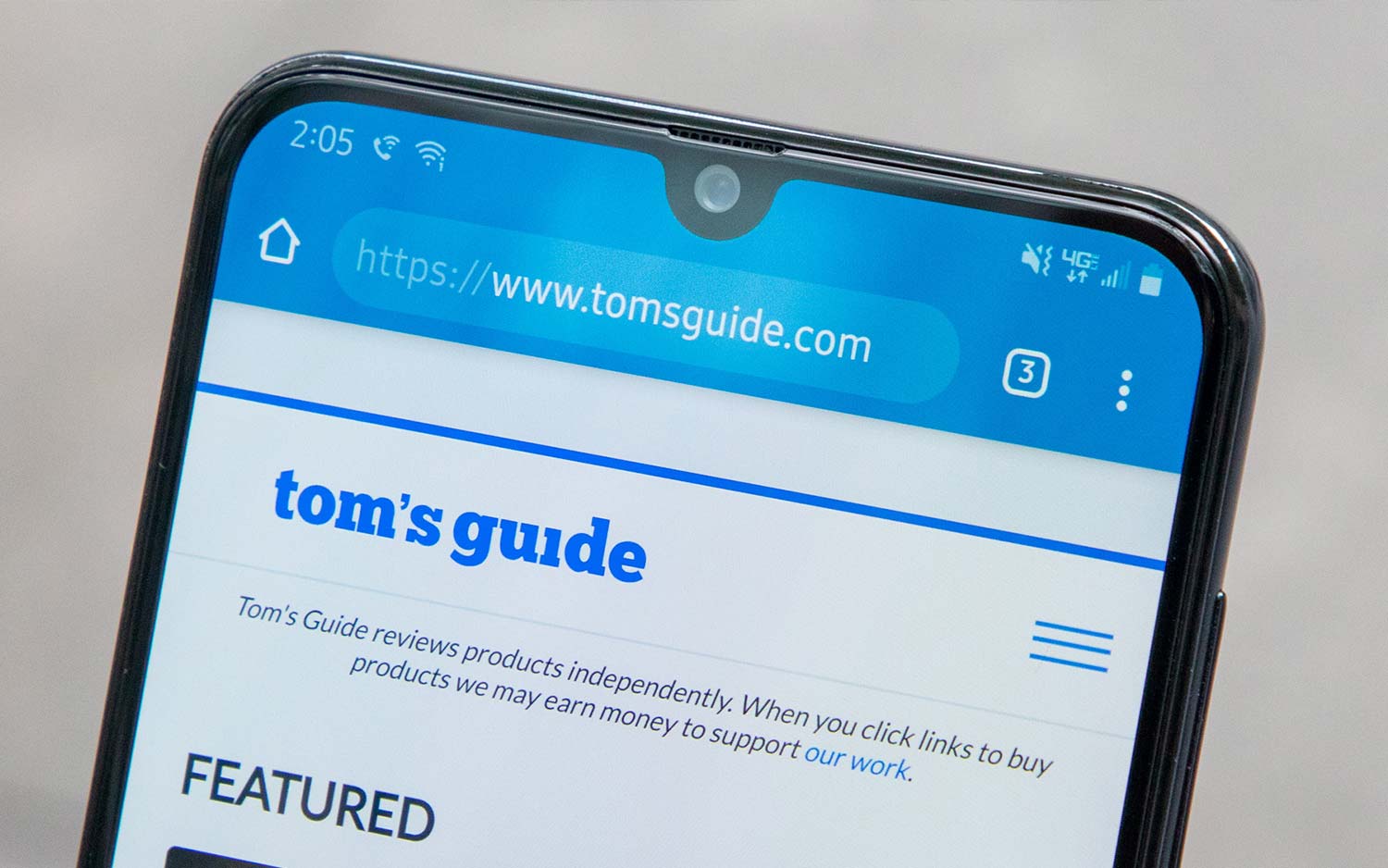
It's admirable that Samsung has delivered a 6.4-inch, Full-HD+Super AMOLED panel in a $349/£309 phone. But what's truly impressive is how good the A50's screen is.
It's not quite as sharp as the one in Google's recently launched midrange handset, as the Pixel 3a packs its, well, pixels a bit closer together over a smaller frame. But the A50 trounces it where brightness is concerned, while offering a selection of display modes that let you tune the colors to your preference. It looks like a flagship screen, and it's in a device that costs a third of the price.
Although the Pixel 3a routinely bests it, the A50's camera can hold its own in ideal conditions.
Watching the trailer for the upcoming Ford v Ferrari flick, the side of Ken Miles' iconic blue-and-white Ford GT40 glistened under the Daytona lights with an intensity that the Pixel 3a couldn't replicate. With a peak full-screen brightness of 574 nits to Google's 401 nits, the A50 wasn't even far off the S10's 611-nit result. And because the A50's panel is OLED, the glow of a Ferrari's yellow headlights against the moonlit sky over Le Mans captivated in a way it never would have on a similarly priced, LCD-powered phone.
MORE: Apple's iPhone XS Max Has the Best Smartphone Display Ever
The A50 received high marks in color gamut coverage. The screen's 192.8% of the sRGB space again split the difference between the Pixel 3a (182.3%) and the much more expensive Galaxy S10 (208.2%). Delta-E color accuracy testing proved less encouraging, as the A50's 0.74 score wasn't quite as good as the Pixel 3a's 0.18 (numbers closer to zero are better).
For what it's worth, things didn't look wrong to my eye, simply more saturated. But again, Samsung offers alternative profiles in the settings that are more realistic than the default Dynamic tuning, so your mileage may vary.
Camera: Good, but no Pixel
If anyone's camera could give Google's competition in the midrange segment, you'd figure it would be Samsung's. And the Galaxy A50's spec sheet would certainly back up that claim — this phone carries not one, not two, but a whopping three lenses on the back, even though it's about a third of the price of Samsung's other triple-lens phone, the Galaxy S10.

Comprising that trifecta of cameras is a 25-megapixel, ƒ/1.7 main lens, an 8-MP ultrawide ƒ/2.2 lens, and another 5-MP sensor used purely to measure depth. The front of the phone packs yet another 25-MP shooter for crisp selfies — or, at least you'd hope.
I don't know if it's a casualty of Samsung's image-processing software or what, but the A50's photography proved a bit blurrier than the Pixel 3a's in every scene I shot with both phones, even though on paper, the A50's main camera captures twice the number of megapixels.
Take, for example, this scene of a windowsill within our New York office. I'm quite pleased with the A50's attempt overall, but the more you zoom in, the more those details — the specular highlights bouncing off the plant's pot, the texture of the leaves and the gold text on the spine of the sky-blue book — begin to muddle together.
For what it's worth, the resulting shots from the A50 happen to be the same number of pixels as those from Google's handset — indicating work is happening behind the scenes to compress or bin the megapixels, perhaps to brighten the end result. There's no arguing the Galaxy's take on this cloudy outdoor scene is brighter than the Pixel's, though again, it comes at the expense of sharpness. The tree bark, the woodchips beneath it and the glass panes on buildings far away are all harder to discern in the A50's shot.
Unfortunately, the results when the depth sensor comes into play are markedly less impressive. My colleague Jorge's face is hazy and smoothed over in the example from the Galaxy, even though beautification features were turned off. Additionally, the more pulled-back perspective doesn't work here — I prefer the Pixel 3a's vantage point, which crops in to stack the foreground and background more closely together, like you'd expect from a professionally taken portrait.
Although the Pixel 3a routinely bests it, the A50's camera can hold its own in ideal conditions. That definitely is not the case when things get dark, however, as Samsung hasn't gifted this cheaper handset with the same Bright Night feature you'll find on the company's flagships. As a result, the A50 has no answer to Google's Night Sight, and is out of its depth in the near-pitch-black photo op you see above.
Finally, I was quite disappointed from the selfie I took with the A50. My skin tone is more extreme, with oddly strong highlights and pinkish shadows. And again the sharpness is lacking when compared with the Pixel 3a's attempt. Samsung's camera did expose things more brightly, which was a plus — though I'm not sure it was worth the aforementioned trade-offs.
Performance: Solid midrange power
The Exynos 9610 chipset that powers the Galaxy A50 is one we're not accustomed to seeing in many devices. Most of Samsung's handsets, especially in North America, employ Qualcomm Snapdragon power. The Exynos 9610 is a midrange system-on-a-chip that actually compares favorably with the Snapdragon 670 processor in the Pixel 3a.

In fact, in terms of numbers, they're practically dead even. Where the Pixel 3a scored 5,146 in Geekbench 4 — a benchmark that measures overall system performance — the A50 finished at 5,200. And in 3DMark's Sling Shot Extreme OpenGL ES 3.1 test, which focuses on graphical capabilities, the Pixel 3a churned out a 1,602 score, just above the A50's 1,359.
So on paper, the A50 is evenly matched with the baby Pixel — though, of course, paper doesn't tell the whole story. And while I'm pleased to report Samsung's Galaxy-on-a-budget is a reliable all-around performance, you are likely to hit a few snags along the way.
With prices rising and ownership time increasing, the world needs more accessible smartphones. It needs more phones like the A50.
For example, the A50 hasn't always proved eager to get through the lock screen in my experience. Even when using PINs — taking the fingerprint sensor out of the equation — the device will hesitate to re-open the last used app. I ran into this a number of times while commuting and listening to Spotify. Although I wouldn't call it deal-breaking, it is something I rarely, if ever, encountered on the Pixel 3a.
Otherwise, the A50 delivered a mostly stress-free experience, with no other hiccups to note. Multiwindow app usage was a breeze, and I logged in a satisfactory session of PUBG Mobile while the game was set to medium visual quality. Things slowed to a crawl and the back of the phone got a little toasty when I ratcheted everything up to flagship-caliber, HDR settings with anti-aliasing. Then again, no handset with a processor like those in the A50 or Pixel 3a is capable of running the latest mobile titles at maxed visuals.
Battery life and charging: Underwhelming
Samsung is finally packing larger and faster-charging batteries into all its phones, and the Galaxy A50 is no exception. Inside the device's slender metallic frame is a 4,000-mAh battery capable of 15-watt power delivery when using the stock adapter.

In the Tom's Guide battery test, where the device was tasked with loading web pages over LTE until it ran out of juice, the A50 shut down after 9 hours and 37 minutes. That's not bad, though it seems a hair too short given how big the battery is. The Pixel 3a, comparatively, notched 12 hours, landing it on our list of phones with the longest battery life.
MORE: Best Battery App - Battery Saving Apps for iPhone, Android
And as for the fast-charging battery, it turns out it's not actually that speedy at all. We're not terribly surprised, given that 15 watts doesn't really qualify as "fast" in this day of 30- and 40-watt charging technologies from the likes of OnePlus and Huawei. As a result, the A50 hit only a pretty-average 17 percent in 15 minutes connected to the packed-in adapter, and 33 percent after a half hour.
Software: OneUI returns
Like Samsung's more expensive phones, the Galaxy A50 runs the company's OneUI Android front-end. It's a divisive take on Google's operating system, to say the least, with large icons and a reshuffling of on-screen controls and text to the bottom of the screen, where it's easier to interact with on handsets with larger displays.
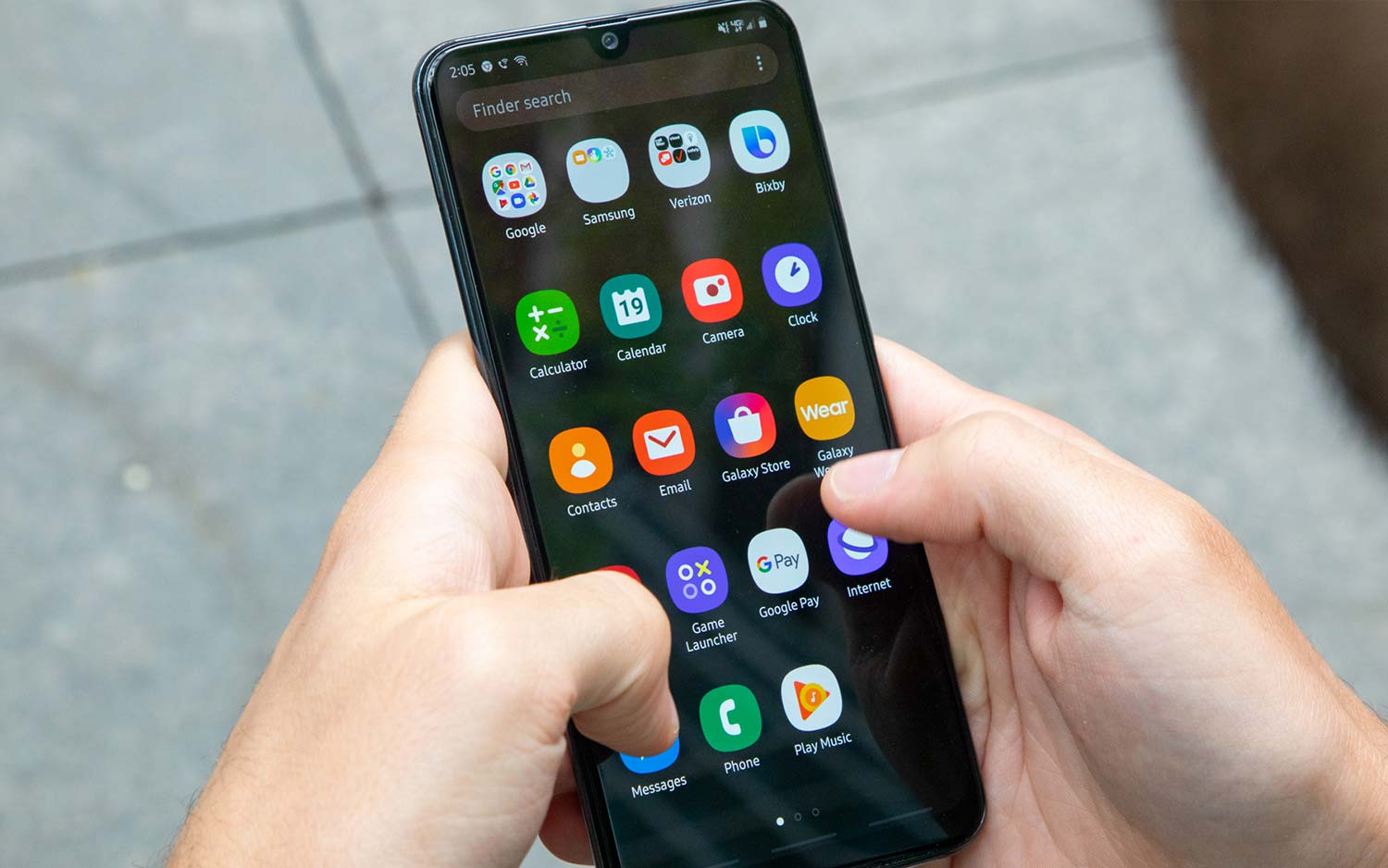
The Galaxy A50 is a handset with a large display, so I'm happy to report that OneUI is more useful and elegant here than on, say, the diminutive, 5.8-inch Galaxy S10e. You also get the same additional features on this device that S10 users get, including Samsung's gesture-based navigation scheme that replaces Android's three-button design with swipe-up motions where each action used to be.
Not everyone will like that approach to getting around; my colleague, Tom's Guide Editor-in-Chief Mark Spoonauer, wasn't particularly fond of it when he tested the Galaxy S10 Plus. At least it takes up less screen real estate than Google's strange mix of gestures and buttons on stock Android Pie.
MORE: Galaxy A50 vs. Galaxy S10e
We expect the A50 to receive Android 10 at some point in 2020. Samsung, unfortunately, has never been known for delivering Android upgrades with any sort of urgency, and this being a midrange product at that, we feared the A50 would slip behind S- and Note-series devices on the company's priority list. However, in the months following release, Samsung has adopted a monthly security patch schedule for the A50, which makes us hopeful that big Android 10 update will arrive sooner rather than later.
Bottom Line
The Galaxy A50 is very good, and it's refreshing to see Samsung take the midrange market seriously — particularly in the U.S., where it has remained laser-focused on its Galaxy S and Note products. With phone prices rising and ownership time increasing, the world needs more accessible handsets. It needs more phones like the A50.
But is it the best you can do for less than $400? Not quite. If you're keen on saving $50 and don't mind being tied to Verizon or Sprint, it's a great option. But the A50's camera, battery life and software in particular pale in comparison to the $399/£309 Pixel 3a, and Google's phone is also compatible with all carriers.
Are those positives in Google's favor worth an extra $50? If you plan on holding onto your next smartphone for as long as possible, I'd definitely say so. But if you're not a fan of the Pixel 3a's more utilitarian design, need a bigger screen but the $479/£469 Pixel 3a XL is simply too expensive, or can take advantage of one of the aforementioned killer promotions (like getting the A50 for $10 a month for two years), this Galaxy is worth it — even if it narrowly misses the title of best-in-class. You could potentially get it even cheaper too, by checking our Samsung coupon codes for the latest deals.
Adam Ismail is a staff writer at Jalopnik and previously worked on Tom's Guide covering smartphones, car tech and gaming. His love for all things mobile began with the original Motorola Droid; since then he’s owned a variety of Android and iOS-powered handsets, refusing to stay loyal to one platform. His work has also appeared on Digital Trends and GTPlanet. When he’s not fiddling with the latest devices, he’s at an indie pop show, recording a podcast or playing Sega Dreamcast.
